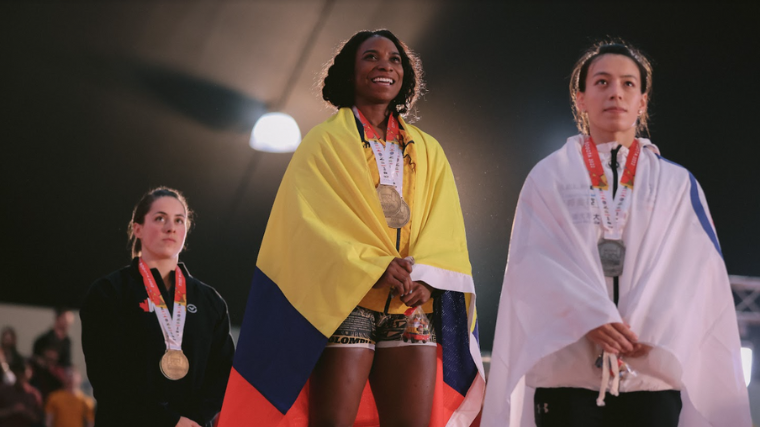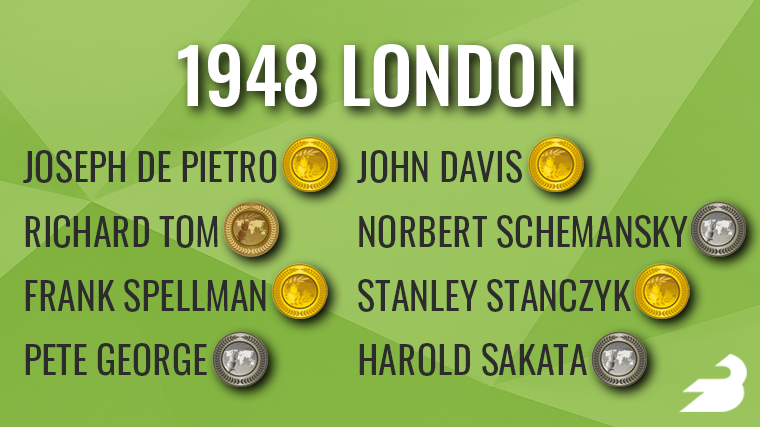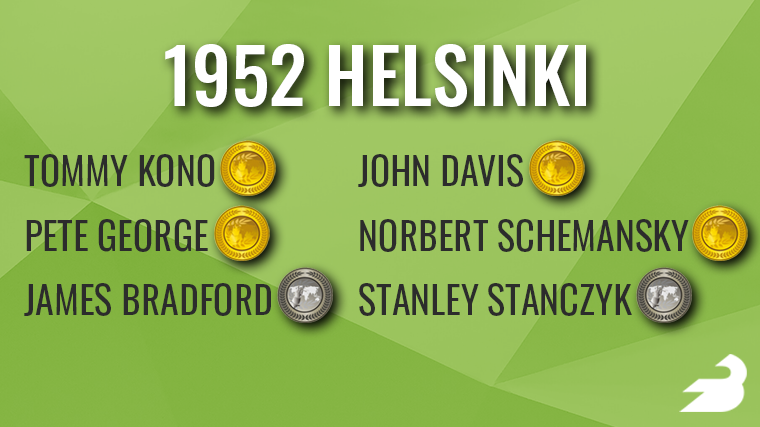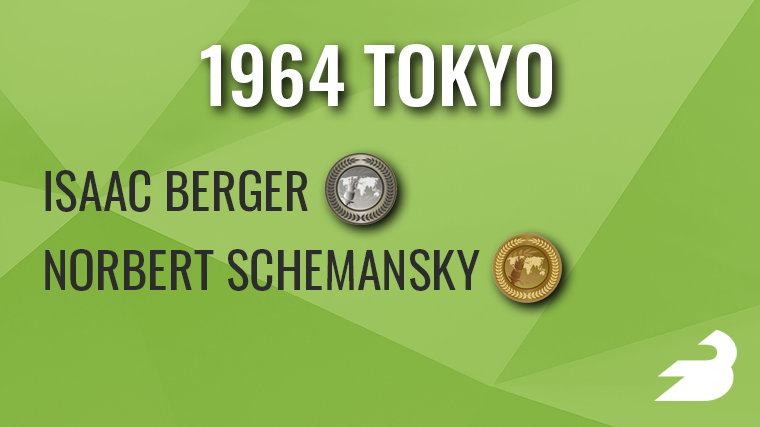If you’ve ever picked up a barbell and hoisted it over your head, dreaming of greatness, you’ve probably fantasized — at least for a moment — about the Olympics. The pinnacle of any weightlifter’s career, Olympic hopefuls from across the globe train to compete in the Games and — even better — to bring home a medal.
Weightlifting at the Olympic Games tends to be dominated by countries like China and Russia. Still, the United States has produced plenty of weightlifters that have made their presence felt throughout the history of the Games.

During the mid-20th century, the United States was one of the most successful nations in the sport. Despite America’s previous success in weightlifting, the past few decades have seen a noticeable and significant drop off in US performances on weightlifting’s biggest stages. Between the 1984 Los Angeles Olympics and the 2000 Sydney Olympics, no U.S. weightlifter stepped onto the podium.
Since 2000 — the first year that women’s weightlifting became an official Olympic sport — women from the U.S. have been holding the torch for their country.
Below, we’ve listed every Olympic medal in weightlifting the United States has won during the modern Olympic era (plus some bonus fun facts about now-defunct weightlifting contests like the two-handed lift and the all-around dumbbell).
1904 (St. Louis)
The men’s two-hand lift isn’t an event contemporary fans of the sport will necessarily recognize. It debuted at the 1896 Athens Olympics, and only four athletes competed in it in 1904 — which was its last year in the Olympics. Lifters hefted a bar using two hands with any style they chose.
A men’s all-around dumbbell event also appeared in St. Louis. It had never been part of the Olympics before and never would be again. Only three athletes competed, two of whom were American.
- Oscar Osthoff (silver, men’s two-hand lift)
- Frank Kugler (bronze, men’s two-hand lift)
- Oscar Osthoff (gold, men’s all-around dumbbell)
- Frederick Winters (silver, men’s all-around dumbbell)
- Frank Kugler (bronze, men’s all-around dumbbell)
1932 (Los Angeles)
At the 1932 Los Angeles Games, 29 men from nine different countries competed across five weight classes.
Two Americans took home bronze medals, including Anthony Terlazzo, who would also stand on the Olympic podium four years later.
- Anthony Terlazzo (bronze, men’s -60-kilogram)
- Henry Duey (bronze, men’s 82.5-kilogram)
1936 (Berlin)
In 1936, Terlazzo moved up the Olympic ranks from his bronze medal performance in Los Angeles to a gold medal victory in Berlin.
He was the only American to put up a podium finish that year.
- Anthony Terlazzo (gold, men’s -60-kilogram)
1948 (London)
Since weight classes were introduced in the 1920 Summer Olympics, this year represented the first change made to these categories. Joseph De Pietro jumped into the Olympics first-ever 56-kilogram class to take home the gold and set a new record at the time with his 105-kilogram press and his 307.5-kilogram total.
Fellow American Richard Tom took home the bronze in that inaugural weight class.
- Joseph De Pietro (gold, men’s 56-kilogram)
- Richard Tom (bronze, men’s 56-kilogram)
- Frank Spellman (gold, men’s 75-kilogram)
- Pete George (silver, men’s 75-kilogram)
- John Davis (gold, men’s +82.5-kilogram)
- Norbert Schemansky (silver, men’s +82.5-kilogram)
- Stanley Stanczyk (gold, men’s 82.5-kilogram)
- Harold Sakata (silver, men’s 82.5-kilogram)
1952 (Helsinki)
Pete George moved up the 75-kilogram ranking between London and Helsinki, securing a gold medal in 1952 after achieving silver in 1948.
Schemansky also took home a gold after a 1948 silver medal performance in the +82.5-kilogram class.
- Tommy Kono (gold, men’s 67.5-kilogram)
- Pete George (gold, men’s 75-kilogram)
- Stanley Stanczyk (silver, 82.5-kilogram)
- Norbert Schemansky (gold, men’s 90-kilogram)
- John Davis (gold, men’s +90-kilogram)
- James Bradford (silver, men’s +90-kilogram)
1956 (Melbourne)
The Melbourne Games marked the first time in a decade that Nobert Schemansky did not podium, as he was sitting out the 1956 Games due to injury. He would come back with a vengeance four years later.
In the meantime, Isaac Berger, Charles Vinci, and Tommy Kono all had repeat medal performances.
- Charles Vinci (gold, men’s 56-kilogram)
- Isaac Berger (gold, men’s 60-kilogram)
- Pete George (silver, men’s 75-kilogram)
- Tommy Kono (gold, men’s 82.5-kilogram)
- Jim George (bronze, men’s 82.5-kilogram)
- David Sheppard (silver, men’s 90-kilogram)
- Paul Anderson (gold, men’s +90-kilogram)
1960 (Rome)
American legends like Kono, Schemansky, Vinci, and Berger participated in and medaled at multiple consecutive Olympic Games.
All of these athletes medaled in Rome.
- Charles Vinci (gold, men’s 56-kilogram)
- Isaac Berger (silver, men’s 60-kilogram)
- Tommy Kono (silver, men’s 67.5-kilogram)
- Jim George (silver, men’s 82.5-kilogram)
- James Bradford (silver, men’s +90-kilogram)
- Norbert Schemansky (bronze, men’s +90-kilogram)
1964 (Tokyo)
In Tokyo, Schemansky became the first person to medal in weightlifting in four separate Olympic Games — a feat which he accomplished despite missing the 1956 Games due to injury.
Berger took home his third medal that year.
- Isaac Berger (silver, men’s 60-kilogram)
- Norbert Schemansky (bronze, men’s +90-kilogram)
1968 (Mexico City)
The 1968 Mexico City Olympic Games also served as the 1968 World Weightlifting Championships.
The United States only took home one medal, won by Joseph Dube in the +90-kilogram class.
- Joseph Dube (bronze, men’s +90-kilogram)
1976 (Montreal)
The Montreal Games in 1976 were the first Olympics to test athletes for anabolic steroids. They were also the first Games since 1928 to not feature the clean & press in weightlifting. It was dropped after the 1972 Munich Games because there were so many disagreements over the necessary form.
Only Lee James medaled in weightlifting for the U.S. that year.
- Lee James (silver, men’s 90-kilogram)
1984 (Los Angeles)
The last American men to medal at the Olympics did so in 1984, the year the Soviet Union boycotted the Los Angeles Games.
Guy Carlton captured the bronze while Mario Martinez took home silver.
- Guy Carlton (bronze, men’s 110-kilogram)
- Mario Martinez (silver, men’s +110-kilogram)
2000 (Sydney)
While women’s weightlifting didn’t become an official Olympic sport until 2000, women weightlifters competing for the U.S. also have a long history of success. American Karyn Marshall — who would later become the first woman to clean & jerk 300 pounds in competition — won the heavyweight category at the 1987 Women’s World Weightlifting Championships, the first year the competition was held.
At the 2000 Sydney Games, American Tara Nott became the first-ever Olympic Champion in women’s weightlifting after finishing first overall in the 48-kilogram weight class.
- Tara Nott (gold, women’s 48-kilogram)
- Cheryl Haworth (bronze, women’s +75-kilogram)
2016 (Rio de Janeiro)
The no-medal gap between 2000 and 2016 is the longest Olympic cycle without seeing an American on the podium.
With her third-place finish in Rio de Janeiro in 2016, Sarah Robles brought the U.S. back to the podium and started setting the stage for her success at the 2020 Tokyo Games.
- Sarah Robles (bronze, +75-kilogram)
2020 (Tokyo)
Although the Games will go down in history as the 2020 Olympics, the competition technically took place in 2021 due to the COVID-19 pandemic. While there had been 260 weightlifters competing at the 2016 Olympics, the field was whittled down to 196 competitors in the 2020 Games.
Katherine Nye (known Katherine Vibert) and — once again — Sarah Robles earned medals for the United States.
- Katherine Nye (silver, women’s 76-kilogram)
- Sarah Robles (bronze, +87-kilogram)
How Weightlifters Medal at the Olympics
While the sport of weightlifting is centralized and largely consistent from the local level to the World Championships, the Olympic Games do have a few exclusive rules and conditions that add to their prestige. Namely, that there are no “small” medals awarded at the Games.
In weightlifting, “big” medals refer to those awarded for performance in the Total — a combination of the athlete’s best snatch and clean & jerk. “Small” medals refer to accolades for the heaviest lifts in those respective disciplines.
As there are no lift-exclusive rankings at the Olympics, athletes must perform well in both the snatch and jerk, and cannot get away with specializing too heavily in either.
This can also affect how a country selects which athletes to send to the Games. Specialist weightlifters who excel in the snatch, for instance, but aren’t as comparatively strong in the clean & jerk (such as China’s Lu Delin) may thus be overlooked for a more well-rounded competitor.
On to 2024
The 2024 Olympics will take place in Paris and feature up to 12 weightlifters from each weight category. There will be five weight categories for women and five for men. Weightlifters will qualify for the 2024 Paris Olympics based on their competitive totals during the qualification period, which will run from Aug. 1, 2022 through May 24, 2024.
The 2022 International Weightlifting Federation’s (IWF) World Weightlifting Championships, which ran from Dec. 5 to 16 Bogotá, Colombia, were the first major qualification event for athletes who wish to make it to Paris. The 2024 Olympic Games will take place from Jul. 26, 2024, through Aug. 11, 2024.
Featured Image: @katevibert on Instagram













